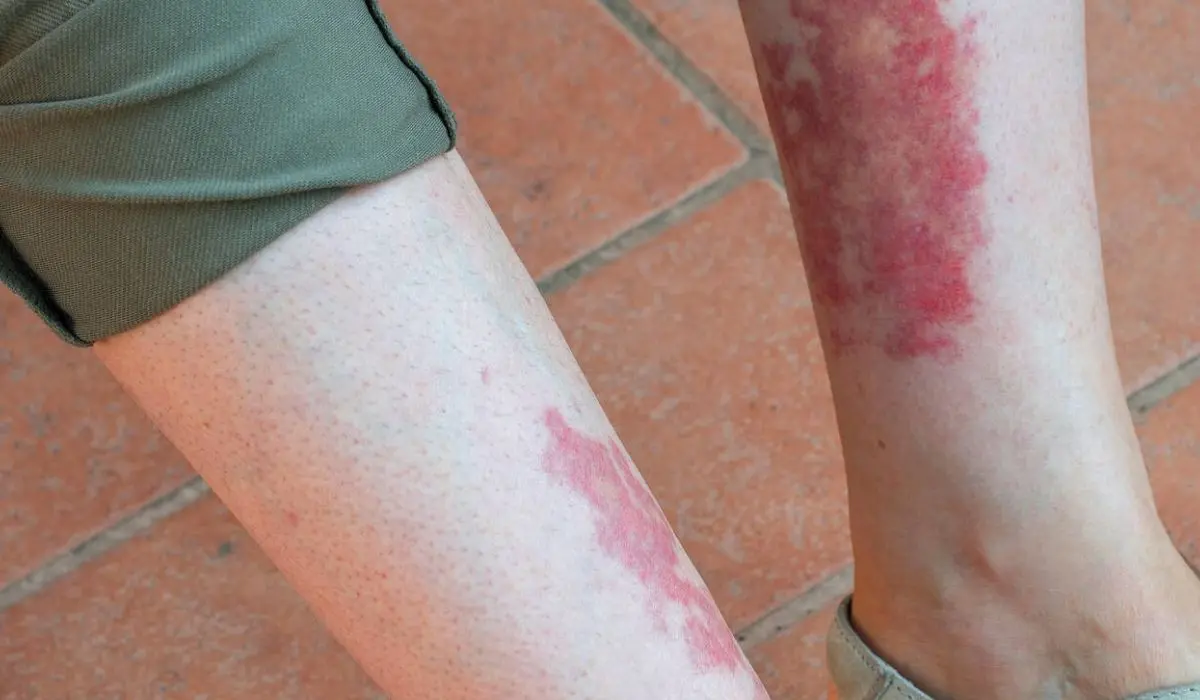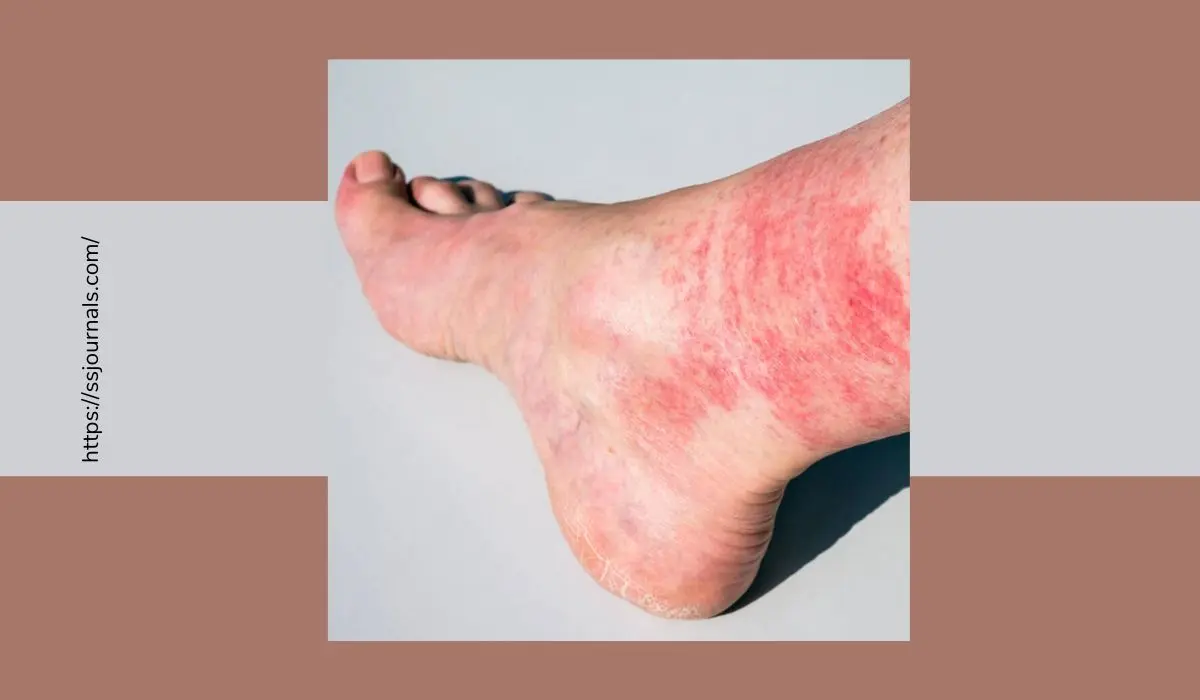Vasculitis refers to inflammation of the blood vessels, restricting blood flow and potentially leading to organ and tissue damage. While over 15 types exist, prompt treatment tailored to the specific vasculitis form improves outcomes.
Read on to learn about the causes, symptoms, diagnosis, and treatment for this condition.
Introduction To Vasculitis
Vasculitis occurs when the body’s immune system incorrectly attacks healthy blood vessels, causing inflammation that thickens vessel walls and restricts blood flow. This results in poor oxygenation and nutrient delivery to downstream tissues and organs.

Vasculitis can affect vessels of any size, type, and location. Symptoms vary based on the degree and location of blood vessel inflammation. Vasculitis is considered primary when no cause is identified, and secondary when resulting from an underlying disease.
Diagnosing vasculitis requires excluding other potential causes through imaging and lab tests. Early treatment is key to preventing complications like lasting organ damage. Treatment involves immune-suppressing medications.
What Causes Vasculitis?
While the cause is often unknown, vasculitis risk factors include:
– Autoimmune disorders like lupus, rheumatoid arthritis, and IBD
– Chronic infections – viral hepatitis, HIV, bacterial endocarditis
– Cancers, especially blood cell cancers like lymphoma and leukemia
– Exposure to certain medications that trigger an autoimmune reaction
– Cocaine use, which causes blood vessel damage
– Rare hereditary conditions affecting blood vessels
In many cases, vasculitis results from the immune system incorrectly attacking the body’s own healthy tissue. Why this occurs remains under study but involves blood vessel inflammation.
Symptoms Of Vasculitis
General symptoms include:
– Fatigue, weakness, fever, and malaise
– Muscle and joint pain or arthritis-like aches
– Rashes including purpura, petechiae, nodules, ulcers
– Neurological issues like headache, numbness, nerve pain
Specific symptoms manifest based on the affected blood vessel size and location:
- Large vessel arteritis – Headaches, jaw pain, double vision, arm claudication
- Medium vessel vasculitis – Nosebleeds, sinusitis, ear pain, cough
- Small vessel vasculitis – Skin rash, joint pain, abdominal pain, flank pain
Major Types of Vasculitis
Vasculitis types are categorized by the size of affected blood vessels. Some key forms include:
– Giant cell arteritis – swelling of large head artery branches
– Polyarteritis nodosa – medium artery inflammation causing organ damage
– Kawasaki disease – mostly affects the medium arteries of young children
– Buerger’s disease – small vessel inflammation of hands and feet
– Henoch-Schönlein purpura – small vessel vasculitis causing kidney disease
– Hypersensitivity vasculitis – small vessel, from reactions to medications
Proper diagnosis of specific vasculitis types is essential for guiding treatment.
Diagnosing Vasculitis
Doctors diagnose vasculitis through:
– Medical history – asking about symptoms, medication history, and any infections
– Physical exam checking for fever, rash, reduced pulses, organ changes
– Blood tests assessing markers like ESR, CRP, and organ function
– Urine analysis since small vessel vasculitis injures kidneys
– Imaging like ultrasound, CT, MRI, and PET scans to visualize vessels
– Biopsy of skin, nerve, or other tissue for a more definitive diagnosis
Based on results, doctors categorize the type of vasculitis present and its effects on organs like the lungs, kidneys, heart, and brain.
Typical Treatment Approaches
Treatments focus on reducing inflammation in blood vessel walls and preventing organ damage:
– Corticosteroids like prednisone to reduce swelling and immune response
– Immunosuppressants including azathioprine, methotrexate, and cyclophosphamide
– Biologics such as rituximab that inhibit immune cell production
– Plasma exchange to remove antibodies attacking blood vessels
– Surgery to repair a damaged section of artery or graft a bypass
– Medication discontinuation if vasculitis was triggered by a drug reaction
Prognosis is very dependent on the type of vasculitis but early treatment prevents lasting end-organ damage in most cases.
Preventing Flare-Ups
Long term, the following prevention strategies, helps avoid vasculitis recurrences:
– Take medications as prescribed and attend follow-up appointments
– Abstain from cocaine use which causes blood vessel damage
– Promptly treat any bacterial infections before they become advanced
– Avoid known medication triggers and allergens
– Use sunscreen, since sunlight can exacerbate certain types
– Reduce stress and practice self-care techniques
– Quit smoking, as tobacco harms blood vessels
Seeking prompt medical care for emerging symptoms helps prevent complications like aneurysms, tissue damage, and strokes related to untreated vasculitis.
Conclusion
Vasculitis, or inflammation of blood vessels from an autoimmune attack, disrupts normal blood flow but can be managed if caught early. The key is identifying the specific vasculitis type so tailored immunosuppressive treatment can begin quickly.
Combining medication with healthy lifestyle habits provides the best chance of remission and prevents further blood vessel and tissue injury in the long run.
FAQs
Fatigue, unexplained fever, sudden pain, rashes, and neurological symptoms like numbness or blurred vision can be early vasculitis indicators. Prompt evaluation is key.
Often the cause is unknown. But it may result from autoimmune disease, chronic infections, cancers, medication side effects, or cocaine use which can all trigger immune dysfunction.
It can be, depending on the severity and vessels affected. Aortic and cerebral artery inflammation pose high risk. Proper treatment prevents death from complications like aneurysms, hemorrhage or occlusion.
No, vasculitis is a progressive condition that will continue worsening without treatment. Corticosteroids and other immunosuppressants are required to induce remission.
Potentially life-threatening complications like blood vessel rupture, aneurysms, heart attacks, kidney failure, stroke, and severe tissue damage can occur if vasculitis remains untreated.

